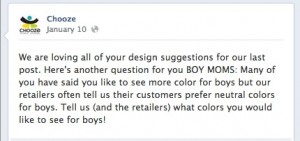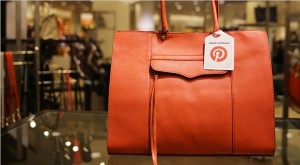The Most Encouraging 2014 Business Trend
By Mary Aviles
Since trend analysis is a big part of what we offer our clients, we’ve read many of the 2014 predictions out there. One of the most encouraging we’ve seen is what Forrester’s deemed customer obsessed and what Bruce Tempkin calls customer empathy: whereby brands invest in developing much closer relationships and significantly improved experiences with and for their customers. Even the terms themselves reflect a level of emotion uncommon in business terminology: obsession and empathy. This movement is hot across every industry in which we currently work. For example, within the healthcare industry specifically, at a time when consumerism is on the rise, patient experience has become a major priority, as patient feedback suggests that there is definitely room for improvement.
At the same time, social media platforms have been condensing the research cycle, allowing for much faster means of asking and receiving customer feedback. Consider the following examples:
Nordstrom, an early Pinterest business user, has begun featuring pinned items in stores. They use an internal iPad app to alert salespeople to what’s trending on Pinterest, allowing them to then prominently merchandise those items on the floor.
"We believe our customers are telling us, through their pins, which items are the most relevant and exciting."
In the Fall of 2013, Hyatt–via popular international bloggers–hosted the World’s Largest Focus Group via a 24-hour Twitter chat #HyattWLFG. The act of conducting the research itself fully supports Hyatt’s brand position of changing the travel experience (and the resulting infographic of generated insights is pretty great as well). And, what’s even more encouraging is that this on-the-fly research format is being using alongside more traditional market research:
"...the WLFG came about as a result of more traditional focus groups in the previous 18 months: 40 facilitated group discussions which resulted in changes to Hyatt's approach to guest services."
Even on my own Facebook NewsFeed, I recently saw the following post from children’s shoe brand, ChoozeShoes:
 When faced with information from retailers that did not seem to jive with anecdotal (or gut) information, they decided to take it to their customers directly via Facebook. Though feedback of this nature is directional, it’s a good, cost-effective reinforcer (or rejector) of gut. It also provides some ammunition for use with reluctant retailers. They gathered 33 comments to date–decent engagement. And, in addition to product development feedback, they demonstrated to their 11,520 followers that they care about customer input. They were also able to direct a handful of commenters to current shoe designs that fit their feedback, possibly resulting in purchases.
When faced with information from retailers that did not seem to jive with anecdotal (or gut) information, they decided to take it to their customers directly via Facebook. Though feedback of this nature is directional, it’s a good, cost-effective reinforcer (or rejector) of gut. It also provides some ammunition for use with reluctant retailers. They gathered 33 comments to date–decent engagement. And, in addition to product development feedback, they demonstrated to their 11,520 followers that they care about customer input. They were also able to direct a handful of commenters to current shoe designs that fit their feedback, possibly resulting in purchases.
We often hear or read negative research industry commentary about brands attempting to cut out the researcher with these types of activities. We disagree. As researchers we are confident that there is a proper time and place for these methodologies. And, we are excited to have the opportunity to utilize and integrate with new platforms and exercise new techniques when appropriate. As customers, we are excited about the upside of vastly improved customer experiences.




